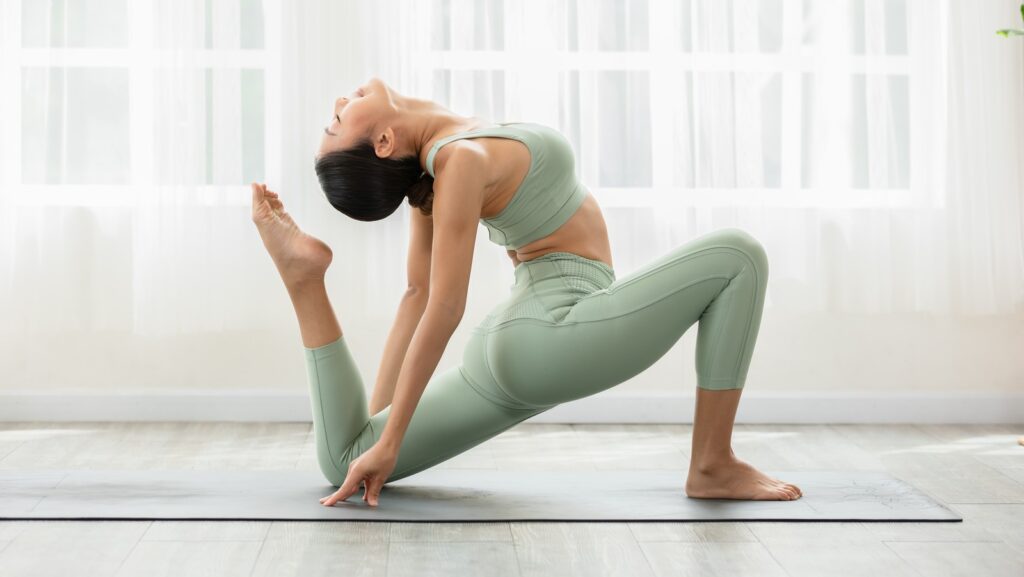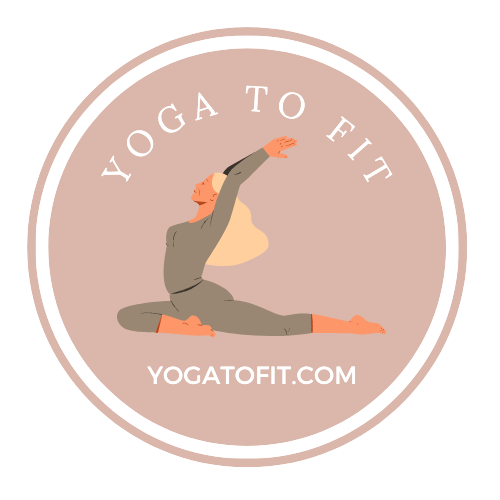How Long You Should Hold a Yoga Pose

Adding yoga pose to your exercise routine is a great choice. Yoga tones muscles increases flexibility and improves balance. It also helps you relax, reduce stress, anxiety, depression, and chronic pain, sleep better, and enhance your overall well-being and quality of life.
Practicing Yoga basically means practicing various Yoga Poses. There are many Yoga Poses out there that you can do according to your body’s comfort and flexibility.
Now you might ask ‘How Long Should I Hold a Yoga Pose?‘ which is a pretty valid question as the length of time you hold a pose can have a big impact on your yoga journey.
Don’t worry at all as in this easy and step-by-step guide we will show you how time depends on a Yoga Pose and vice versa and how you can reap maximum benefit of the Yoga Pose you are doing.
Whether you are an experienced yogi or a beginner, we will help you master the time duration of holding a pose!
Let’s get Yogaing!
Understanding Yoga Poses
Yoga poses, or asanas, are the building blocks of a yoga practice. Each pose has its unique benefits, from increasing flexibility to improving strength and balance. An experienced yogi might tell you to hold a pose for a certain period of time.
However, the duration for which you hold a pose can significantly impact the outcomes of your practice. Sometimes holding a pose longer may increase flexibility or cause sprains.
The Importance of Duration
Holding a yoga pose is not just about physical endurance; it’s also about finding the balance between pushing your limits and listening to your body. The duration you hold a pose plays an important role in achieving the desired results.
For example- Your goal is to increase body flexibility so you hold a yoga pose for a longer duration and test your body limit but it may cause a sprain in body parts such as the wrist and toes if held too long or not done properly.
Thus know the limit of your body and adjust pose duration accordingly.
Factors Influencing the Duration of a Pose
Here are a few factors that influence how long you should hold a Yoga Pose:
- Your Experience Level: Your experience level in yoga can greatly influence how long you should hold a pose. Beginners may need shorter durations to prevent overexertion on their body, while experienced yogis can explore longer holds to deepen their practice and enhance body flexibility.
- Pose Complexity: The complexity of a yoga pose also determines how long you should hold it. Basic poses like Tadasana (Mountain Pose) can be held for a longer time, while advanced poses like Bakasana (Crow Pose) may require shorter durations due to their intensity.
- Individual Flexibility: Your individual flexibility and body type play an important role in pose duration. Some people naturally have greater flexibility and can hold a yoga pose longer, while others may need to work gradually to build flexibility and endurance.
- Your Goals: Your goals for practicing yoga can influence how long you hold yoga poses. If you’re looking to increase flexibility, longer holds may be beneficial. If your goal is strength and stability, shorter holds with repetitions may be more effective and vice versa.
Duration for Holding few Yoga Poses
Different Yoga Styles have different durations of holding the pose. Here are some of them:
Hatha Yoga (15 to 30 seconds)
In this classical style, poses are held for a moderate duration, usually 15 to 30 seconds to a minute or longer. The focus is on alignment and balance.
Vinyasa Yoga (5 to 10 seconds)
Vinyasa classes are characterized by flowing from one pose to another with each breath. Poses are often held for a few breaths, about 5 to 10 seconds. The emphasis is on movement and breath coordination.
Yin Yoga (3 to 5 minutes)
Yin yoga involves deep stretching and poses are held for an extended period, often 3 to 5 minutes or even longer. This style targets connective tissues and aims for deep relaxation.
Ashtanga Yoga (Hold for five breaths)
Ashtanga follows a specific sequence of poses with each pose held for five breaths. It’s a dynamic style, and the focus is on building strength and flexibility.
Ultimately, there is no single answer to the question of how long you should hold a yoga pose. It is a personal journey that depends on a variety of factors.
Guidelines for Holding Yoga Poses
Whether you’re a beginner or an experienced yogi, these guidelines will help you find the ideal duration of your yoga pose:
Beginners vs. Advanced Practitioners
Beginners: If you are a beginner to yoga, start with shorter durations, such as 15 to 30 seconds per pose. This allows your body to adapt gradually to the demands of the practice without overexertion.
Intermediate Practitioners: As you gain experience and confidence, aim for 30 seconds to a minute per pose. This duration provides a balance between building strength and flexibility.
Advanced Practitioners: Advanced yogis can hold yoga poses for several minutes or even longer, depending on their specific goals and the style of yoga they practice. However, it’s important to listen to your body and avoid pushing yourself to the point of discomfort or pain.
Finding Your Edge
In yoga, finding your edge means pushing yourself just enough to challenge your limits without causing pain or injury. It’s essential to strike a balance between effort and ease.
While in a pose, you should feel a gentle stretching sensation or a degree of muscular engagement. This is often described as “comfortable discomfort” If you experience sharp pain or excessive discomfort, ease out of the pose immediately.
The Importance of Breath
Your breath is a valuable tool in determining how long to hold a yoga pose. Here are some guidelines to synchronize your breath with your pose-holding duration:
Normal Breathing: For most poses, aim to maintain normal, steady breathing. If you find your breath becoming shallow or strained, it’s a sign that you may be pushing too hard or holding a yoga pose for too long.
Deep Breathing: In restorative or relaxation poses, focus on deep and relaxed breathing. This can help you sink deeper into the pose and calm the nervous system.
Using Props
Yoga props are not just for beginners; they can enhance the practice for practitioners of all levels. Props provide stability, and support, and allow for longer and more comfortable pose holds:
Blocks: Use blocks to bring the ground closer to you in poses where you might feel you are losing balance.
Straps: Straps can assist in reaching and holding yoga pose poses that require a deeper stretch, such as Paschimottanasana (Seated Forward Bend).
Benefits of Holding Yoga Poses
Here are a few benefits of holding a Yoga Pose:
- Improved Flexibility: Holding poses gently stretches and elongates muscles, tendons, and ligaments, gradually increasing your flexibility over time.
- Strength Building: Many yoga poses require you to engage and hold specific muscle groups, effectively building strength, especially in your core, legs, and arms.
- Enhanced Focus: As you concentrate on maintaining a pose, your mind naturally tunes into the present moment, enhancing your mental focus and concentration.
- Stress Reduction: Hold yoga poses with mindful breathing can reduce stress and promote relaxation, helping you find calmness in challenging situations.
- Better Posture: Regular practice of holding a yoga pose can improve your posture by strengthening the muscles that support your spine and promoting alignment.
FAQ’S
Q. Can I Hold Yoga Poses Too Long?
A: While longer holds can be beneficial, holding a yoga pose for an excessively extended period may lead to overstretching or strain. It’s essential to strike a balance and avoid pushing your body beyond its limits.
Q. How Long Should I Hold Restorative Poses?
A: Restorative poses, designed for relaxation and healing, can be held for several minutes, allowing your body to completely surrender and release tension.
Q. Is There an Ideal Duration for Each Pose?
A: There isn’t a one-size-fits-all answer to this question. The ideal duration varies based on the pose, your experience level, and your goals. Some poses may benefit from shorter holds, while others require longer exploration.
Q. Can I Practice Dynamic Yoga with Shorter Holds?
A: Dynamic yoga styles like Vinyasa involve flowing from one pose to another with shorter holds. These practices focus on building strength and flexibility through movement rather than extended static poses.
You may also like:
Conclusion
In the world of yoga, the duration for which you hold a yoga pose is a different and individualized aspect of your practice. It depends on your experience, the complexity of the pose, your flexibility, and your goals.
Remember that yoga is not a competition; it’s a journey of self-discovery and well-being. Listen to your body, respect its limits, and gradually explore longer holds to deepen your practice and enjoy the myriad benefits that yoga has to offer.
As you continue your yoga journey, keep in mind that the ideal duration for holding a yoga pose may evolve.
Be patient with yourself, stay mindful of your breath, and embrace the transformative power of yoga.
Happy Yogaing!



